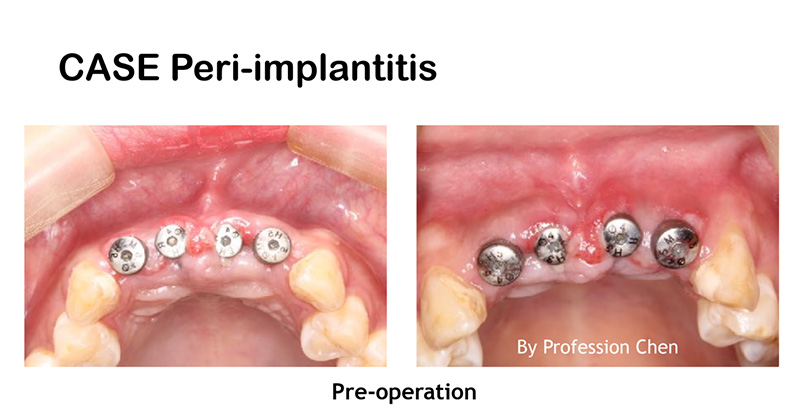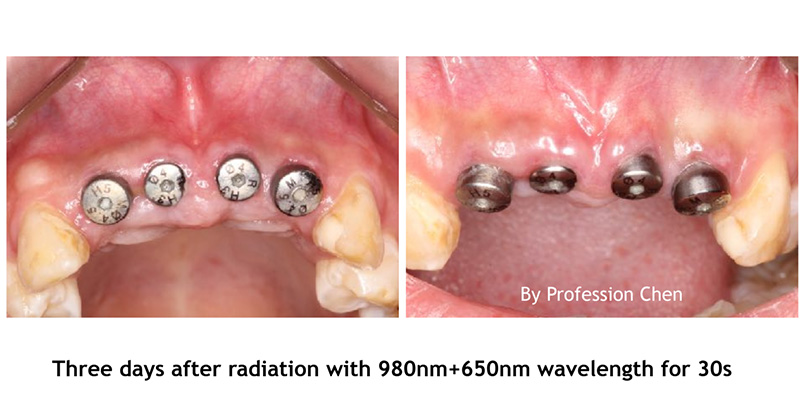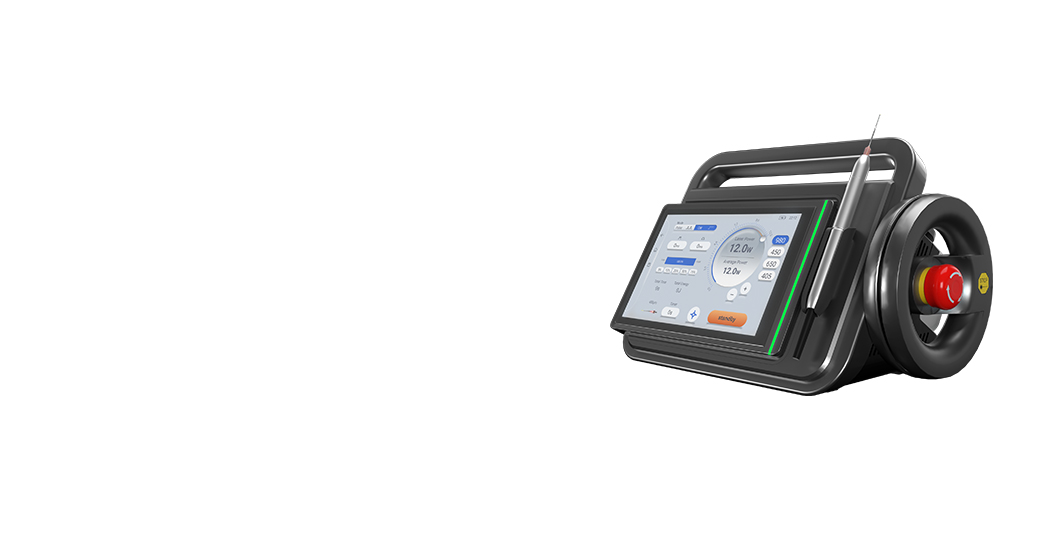Laser Treatment in Implant Uncovering
Semiconductor laser treatment is a minimally invasive technique that has gained traction in various dental procedures, including implant uncovering. This method involves using a semiconductor laser to access dental implants covered by soft tissue, ensuring a precise, controlled, and efficient process. This article will explore the principles, advantages, and precautions of semiconductor laser treatment in implant uncovering.
Principles of Diode Laser Treatment
Semiconductor lasers, also known as diode lasers, operate by emitting a concentrated beam of light at a specific wavelength. These lasers are commonly used in dental procedures due to their precision and effectiveness. The principles of semiconductor laser treatment involve:
-
Wavelength:
Semiconductor lasers typically operate at wavelengths ranging from 810 to 1064 nm. The chosen wavelength determines the laser's interaction with different types of tissue.
-
Tissue Interaction:
The laser light is absorbed by the target tissue, causing photothermal effects. This process allows the laser to cut or ablate the tissue with minimal damage to surrounding areas.
-
Precision and Control:
The laser provides precise control over the depth and area of tissue removal, reducing the risk of complications and promoting faster healing.
-
In implant uncovering, the semiconductor laser is used to remove the overlying soft tissue, exposing the implant for further prosthetic work.
Advantages of Diode Laser Treatment
The use of semiconductor lasers in implant uncovering offers several advantages:
-
Minimally Invasive:
Laser treatment is less invasive compared to traditional surgical methods, resulting in reduced trauma to the tissue and quicker recovery times.
-
Reduced Bleeding:
The laser coagulates blood vessels as it cuts, significantly reducing bleeding during and after the procedure.
-
Enhanced Precision:
The laser allows for precise removal of tissue, ensuring only the necessary amount is removed and minimizing damage to surrounding tissues.
-
Decreased Pain and Swelling:
Patients typically experience less pain and swelling post-operatively due to the minimally invasive nature of the procedure.
-
Sterilization Effect:
The laser's high energy can also have a sterilizing effect on the surgical site, reducing the risk of infection.
-
Improved Healing:
The precise and controlled nature of laser treatment promotes faster and better-quality healing.
Precautions in Laser Treatment for Implant Uncovering
While diode laser treatment offers many benefits, certain precautions should be taken to ensure safety and effectiveness:
-
Proper Training:
Clinicians must be adequately trained in using semiconductor lasers to ensure safe and effective treatment.
-
Appropriate Wavelength:
Selecting the appropriate wavelength is crucial for optimal tissue interaction and desired therapeutic effects.
-
Eye Protection:
Both the clinician and patient should wear protective eyewear to prevent potential eye damage from the laser.
-
Patient Selection:
Not all patients are suitable candidates for laser treatment. A thorough evaluation is necessary to determine if laser therapy is appropriate.
-
Controlled Power Settings:
Using controlled power settings is essential to avoid overheating and damaging surrounding tissues.
-
Post-Operative Care:
Patients should be given clear post-operative instructions to ensure proper healing and avoid complications.
Clinical Application Cases
-
Single Implant Uncovering:
In cases where a single dental implant needs to be uncovered, the semiconductor laser can precisely and efficiently remove the overlying tissue, exposing the implant without damaging the surrounding areas.
-
Multiple Implant Uncovering:
For patients with multiple implants, the laser allows for a quicker and more controlled uncovering process, ensuring each implant is exposed accurately and with minimal trauma.


Soft Tissue Management:
In addition to uncovering implants, semiconductor lasers can be used for soft tissue management around implants, improving the aesthetic and functional outcomes of the prosthetic work.
Conclusion
Laser treatment represents an advanced and minimally invasive approach to implant uncovering in dental practice. Its advantages of precision, reduced bleeding, minimal pain, and faster healing make it a valuable tool for clinicians. However, proper training, patient selection, and adherence to safety protocols are essential to ensure the success and safety of the procedure. As technology advances and research continues, the use of semiconductor lasers in dentistry will likely expand, offering even more benefits to patients and practitioners alike.



